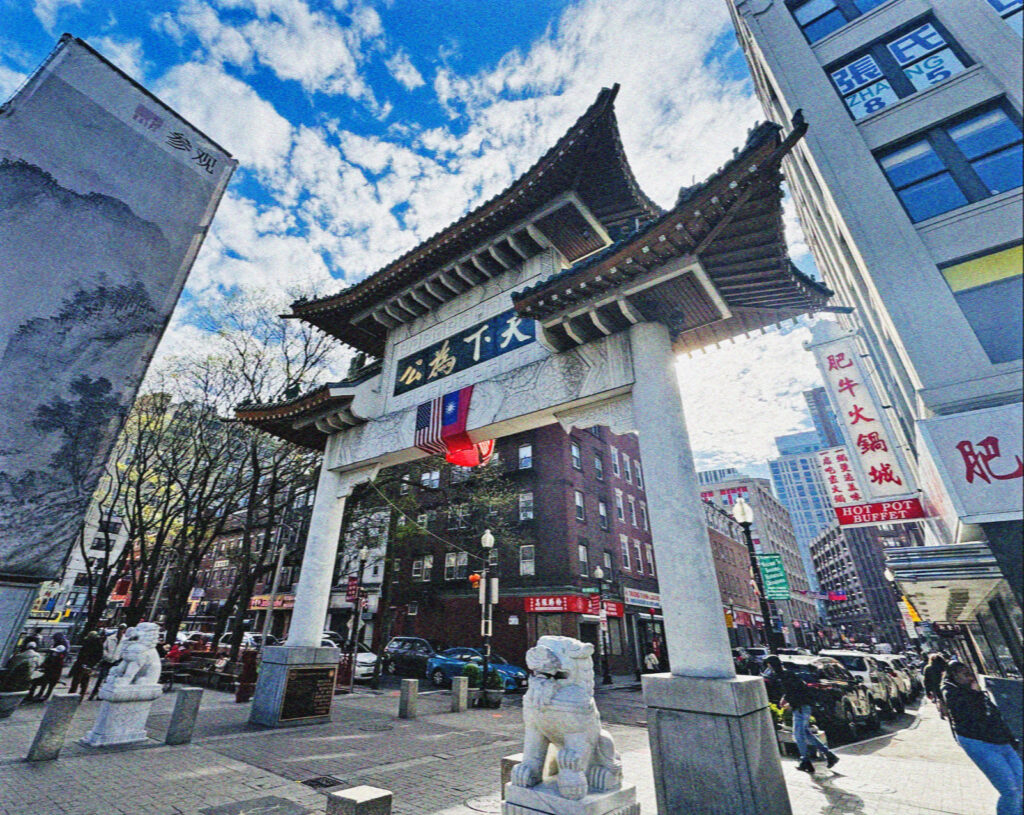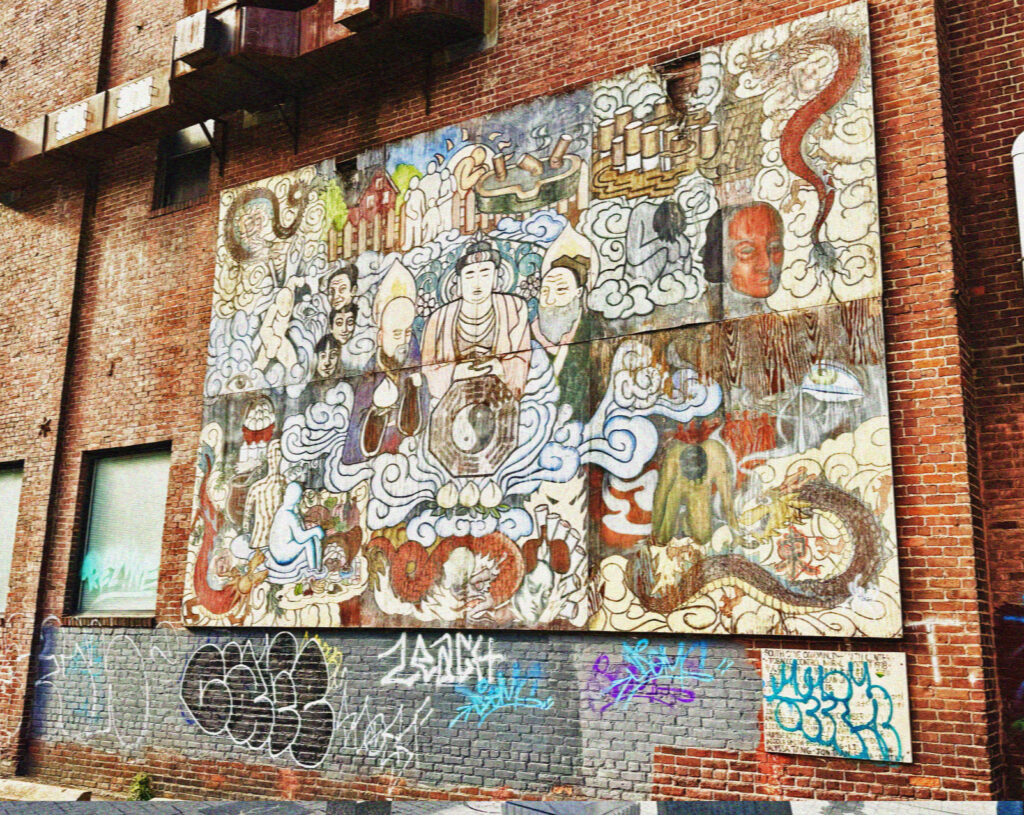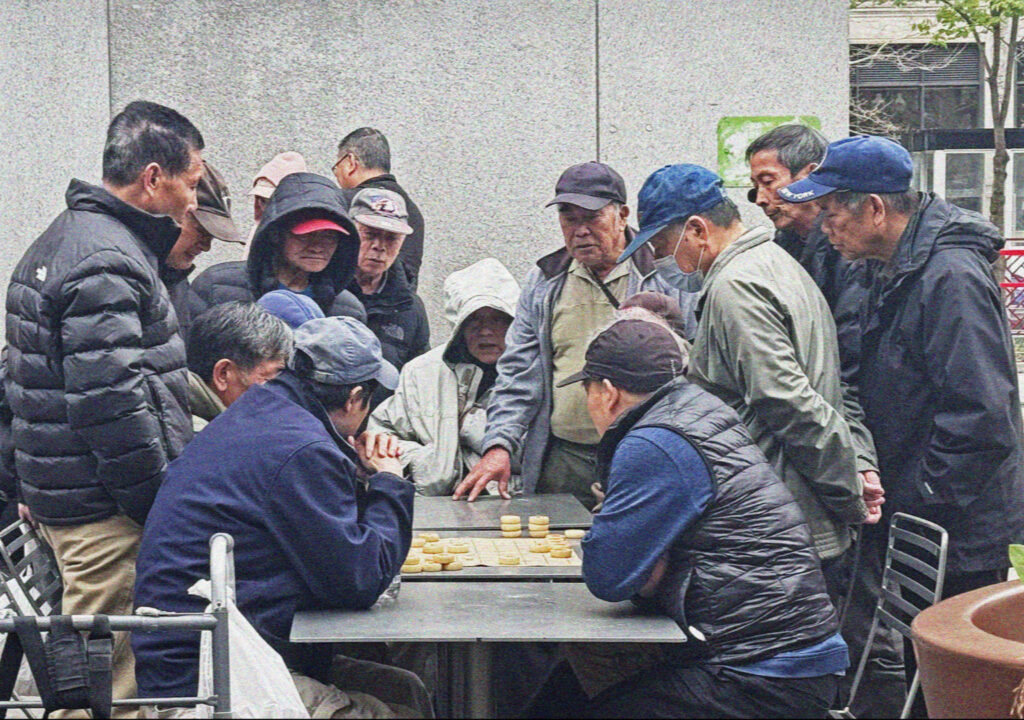It’s impossible to discuss modern Chinese society without considering the influence of life before the Chinese Cultural Revolution; the pre-modern and modern Chinese histories remain distinct but have become almost inextricable. How come?
Mao Zedong, the first chairman of the Chinese Communist Party (CCP) and a founding father of the People’s Republic of China (PRC), had a vision to create a industrialized, modernized China, and he achieved this by shaking off what he viewed as the shackles of “old China” — “old” ideas,” “old culture,” “old customs,” and “old habits” — collectively known as the Four Olds. In truth, Mao’s crusade against the Four Olds aimed to erase the remnants of Chinese traditionalism in favor of his conception of Chinese modernism: one that embraced an ostensibly progressive identity defined by communist values.
But wander through Boston’s Chinatown on a Sunday afternoon and look closely. You might uncover a different narrative — there has been, in fact, a reunion with the very customs that were purged of in the name of modernity and progress. What I’ve found is precisely the opposite of Mao’s vision. The residents of Chinatown embrace the modern principles and society introduced by Mao’s modern China, surely, but they thoughtfully engage with the remnants of pre-modern China. They preserve the worthwhile aspects of their traditional society — such as religion and leisure — while also redefining certain modern principles — including what it means to be “Chinese.”
 This photograph captures the northern face of the Chinatown Gate in Boston’s Chinatown adorned with two flags: the American flag and the Republic of China (ROC) flag. The gate features traditional Chinese architecture and is inscribed, “A world shared by all.” The Chinatown Gate is my first impression of Chinatown — and even of China herself. From the language and tea to the newspapers and even the cigarettes, everything seems authentically Chinese, at least to an outsider. However, this is not completely accurate. Looking closely, it’s evident to see Chinatown’s pushback against the late-modern expectations of nationalism. From my observations, the flags on the Chinatown Gate illustrate a two-fold pushback against this monolithic expectation of nationality and nationalism.
This photograph captures the northern face of the Chinatown Gate in Boston’s Chinatown adorned with two flags: the American flag and the Republic of China (ROC) flag. The gate features traditional Chinese architecture and is inscribed, “A world shared by all.” The Chinatown Gate is my first impression of Chinatown — and even of China herself. From the language and tea to the newspapers and even the cigarettes, everything seems authentically Chinese, at least to an outsider. However, this is not completely accurate. Looking closely, it’s evident to see Chinatown’s pushback against the late-modern expectations of nationalism. From my observations, the flags on the Chinatown Gate illustrate a two-fold pushback against this monolithic expectation of nationality and nationalism.
Two Nations Among One People
Nationalism arose in the late 18th and early 19th centuries when people’s identities shifted from familial ties to their nations, which was typically outlined by ethnicity. Today, the concept of a two-nation China challenges the modernist expressions of nationalism by presenting a scenario in which a single ethnicity and culture are divided and represented by (competing) legitimate governments, thereby defying the late-modern nationalist ideal that typically defines a nationality by a single ethnicity and culture under a some unified political authority. The PRC’s “One China” vision advocates for a unified national identity under Beijing, rejecting separatist or alternate national identities such as those represented by the ROC. Thus, by displaying the ROC flag, Chinatown’s residents openly defy the widely-held understandings of nationalism, aligning themselves more so with a perspective that has rejected this principle.
One People Among Two Nations
Moreover, the juxtaposition of the American flag beside the ROC flag calls for a discussion of pluralistic nationalism — it even defies the expectations of nationalism, which are often tied to a single ethnicity and culture. It shows that the residents of Chinatown embrace a dual identity that acknowledges Chinese and/or Taiwanese ancestry alongside their American environment, lifestyles, and perspectives. This pluralistic-nationality approach rejects the late-modern principle that nationality must be defined singularly by ethnicity or culture. It’s also important to acknowledge that the Chinatown Gate was itself a gift to the residents of Boston’s Chinatown from the Government of Taipei. This realization reveals that the Chinatown Gate was designed for Chinatown’s residents (who are mainly first and second-generation American immigrants) as a reminder of their heritage and to intentionally and outwardly foster this dual-identity — and not merely to “repurchase” the loyalty of these immigrants.
In a conversation with a Chinatown resident, I learned that the combined display of the flags resonated among some members of the community. Some members express a profound connection to their plural nationalities — they acknowledge their ancestral Chinese and/or Taiwanese heritages and also fully embrace their Americanness. He added, “This may be Chinatown, but we are still in the United States.” To me, this statement summarizes the nuanced identities in this community, emphasizing a pluralistic and ethnically inclusive approach to nationality that rejects constraints of late-modern conventions.
 This photograph makes the nameless mural seem much smaller than it really is. In truth, it spans about 20 feet across and about 10 feet high. It was installed by the South Cove Community Health Center Tobacco Control to discourage tobacco usage among community members. Throughout the entire mural, subjects are swallowed by a sea of smoke, and faceless figures are depicted in despair — or perhaps, dilemma — as they deal with the withdrawals and temptations of tobacco use. Pictured at the center of this mural are three figures that are of tremendous influence to Chinese religion: Daode Tianzun (Left) Buddha (Center) and Confucius (Right) — respectively symbols of the major Chinese religions: Daoism, Buddhism, and Confucianism. What is their relevance to the Community Health Center’s agenda? It’s open to interpretation.
This photograph makes the nameless mural seem much smaller than it really is. In truth, it spans about 20 feet across and about 10 feet high. It was installed by the South Cove Community Health Center Tobacco Control to discourage tobacco usage among community members. Throughout the entire mural, subjects are swallowed by a sea of smoke, and faceless figures are depicted in despair — or perhaps, dilemma — as they deal with the withdrawals and temptations of tobacco use. Pictured at the center of this mural are three figures that are of tremendous influence to Chinese religion: Daode Tianzun (Left) Buddha (Center) and Confucius (Right) — respectively symbols of the major Chinese religions: Daoism, Buddhism, and Confucianism. What is their relevance to the Community Health Center’s agenda? It’s open to interpretation.
Secularization, the dissociation of religious and spiritual matters from all public affairs, was of prime importance to Mao Zedong’s modernization initiatives. Mao’s objective was to promote scientific reasoning and rationalism over religious and spiritual beliefs to create a classless society. And religion, after all, was considered “the opiate of the masses” and was used to rationalize the domination of lower classes in feudalistic societies, including the “old China.” Undoubtedly, some of the older members of Boston’s Chinatown community grew up in “old China.” And as the Chinese Cultural Revolution unfolded, they saw the erasure of some religious and spiritual remnants which were important parts of Chinese society. The mural’s illustration of Daoist, Buddhist, and Confucianist religious symbols confronts the secularization forced by the Cultural Revolution upon Chinese people and society in the name of modernity. At best, the act of placing such spiritual figures in a community mural might be attributed to a deliberate desecularization initiated by a public authority. But even at the very least, it represents the toleration of religious and spiritual symbols (for the sake of culture and history) among the Chinatown community. Regardless, it is a reminder of the secularized policies once imposed in China and also revives and honors the pre-modern spiritual traditions within the Chinatown community. But indisputably, the mural represents the Chinatown community’s willingness to resist secularization in some contexts, thus acknowledging the enduring influences of religion and spirituality in Chinese history and even in contemporary society.
 My last photograph shows more than a dozen men intently watching a game of Chinese chess, or Xiangqi. Some of the men are hidden behind each other. Most of the men appear to be between their mid-50s or early-60s and they appear to be engrossed in the game. And unlike the throngs of men and women assembled around other tables in Mary Soo Hoo Park, these men are silent — there is no laughter, no taunting. When I returned to the table approximately 25 minutes after capturing this photo, many of the men were still there, still quietly engrossed in the Xianqi match, still drinking tea and smoking. I must admit, their enthusiasm was contagious — I found myself becoming interested in the game. It’s possible that many of these men grew up in a China that had just experienced the Cultural Revolution. In the first eight years of the Chinese Cultural Revolution, until Mao Zedong’s death in 1976, chess was regarded as a leisure activity for the bourgeoisie. Thus it was banned to align with the communist objective of eliminating class conflict.
My last photograph shows more than a dozen men intently watching a game of Chinese chess, or Xiangqi. Some of the men are hidden behind each other. Most of the men appear to be between their mid-50s or early-60s and they appear to be engrossed in the game. And unlike the throngs of men and women assembled around other tables in Mary Soo Hoo Park, these men are silent — there is no laughter, no taunting. When I returned to the table approximately 25 minutes after capturing this photo, many of the men were still there, still quietly engrossed in the Xianqi match, still drinking tea and smoking. I must admit, their enthusiasm was contagious — I found myself becoming interested in the game. It’s possible that many of these men grew up in a China that had just experienced the Cultural Revolution. In the first eight years of the Chinese Cultural Revolution, until Mao Zedong’s death in 1976, chess was regarded as a leisure activity for the bourgeoisie. Thus it was banned to align with the communist objective of eliminating class conflict.
In fact, leisure as a whole was heavily restricted during the Chinese Cultural Revolution. Mao wanted to modernize China so as to make all aspects of life contribute to the revolutionary cause. And unfortunately, leisure activities were seen as discouraging work and therefore counterproductive to industrialization. In this way, Mao’s restrictions on leisure sought to mold the ideal Chinese communist citizen but also (ironically) echoed the capitalistic ethos for continuous work and productivity. This comparison highlights a paradox within the Marxist agenda, merging communist ideals with a work-centric philosophy found in industrializing and already industrialized nations.
Thus, the men’s interest in Xiangqi quietly resists the pro-industrial and productivity-focused norms of the Cultural Revolution, which took place in their youth. The norms they are resisting are anti-Maoist and anti-communist, surely. But, by the same token, they are also anti-capitalist. The productivity-focused Maoist principles of which they are in defiance are the same productivity-focused principles manifested by capitalist and industrialized nations of the late-modern era.
“The battle over which flag to fly in America’s Chinatowns.” BBC, 20 January 2020, https://www.bbc.com/news/world-us-canada-51129460. Accessed 22 April 2024.
Benzine, Vittoria. “A Guide to Boston Street Art.” Fifty Grande, 2 January 2022, https://www.fiftygrande.com/a-guide-to-boston-street-art/. Accessed 22 April 2024.
“Enter the Dragon: Chinese efforts to become a major chess nation succeeding.”
Phillips, Tom. “The Cultural Revolution: all you need to know about China’s political convulsion.” The Guardian, 10 May 2016, https://www.theguardian.com/world/2016/may/11/the-cultural-revolution-50-years-on-all-you-need-to-know-about-chinas-political-convulsion. Accessed 22 April 2024.
Topalov, Veselin. “Chess in China.” Wikipedia, https://en.wikipedia.org/wiki/Chess_in_China. Accessed 22 April 2024.